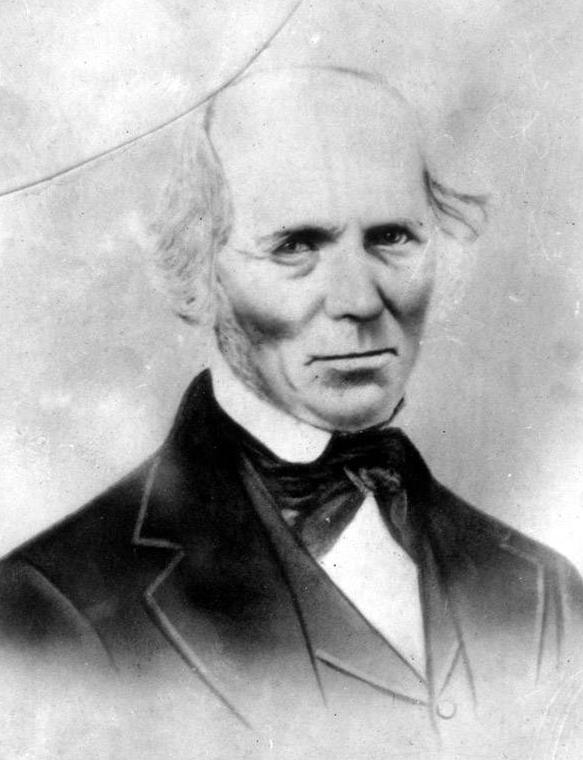COPYRIGHT 2026 SCRIPTURE CENTRAL FOUNDATION: A NON-PROFIT ORGANIZATION. ALL RIGHTS RESERVED. REGISTERED 501(C)(3). EIN: 39-2827600
Reynolds Cahoon
(1790-1861)


By Susan Easton Black
In 1825 Reynolds and his family were residents of Kirtland, Ohio. Reynolds supported his family by laboring on a small farm and by working in his tannery where he not only tanned hides but made shoes and boots.
When missionaries to the Lamanites came through Kirtland, Reynolds was the first to accept their Restoration message and enter baptismal waters. He was baptized on October 12, 1830 by missionary Parley P. Pratt. At age 41 Reynolds was given his first Church assignment. He was called by revelation to journey to Missouri with Samuel Smith, a brother of the Prophet Joseph Smith. Of their journey Samuel Smith wrote, “Preached the gospel without purse or script, enduring much for want of food and rest.” To Reynolds, the journey and arrival in Missouri were worth the sacrifice, for “my mortal eyes beheld great and marvelous things such as I had not ever expected to see in this world.” On their return journey to Kirtland, Reynolds and Samuel “found the region of the country in a state of excitement over the Book of Mormon. People were searching the scripture and came to hear what further testimony we had to give.”1
In Ohio, Reynolds expressed his desire to settle in Missouri to the Prophet Joseph. He was counseled by the Prophet to remain in Kirtland, for his services were needed on the Kirtland Temple Committee. Reynolds later served as a counselor to Bishop Newel K. Whitney and as a counselor in the Kirtland stake presidency. Perhaps of greater interest to Church membership is the naming of his seventh child in 1834. The Prophet Joseph named the child Mahonri Moriancumer Cahoon before explaining, “The name I have given your son is the name of the brother of Jared; the Lord has just shown (or revealed) it to me.”2
It was not until 1838 that Reynolds and his family moved to Missouri. His son William Cahoon recalled, “We turned the key and locked the door of our homes [in Kirtland], leaving our property and all we possessed in the hands of enemies and strangers, never receiving a cent for anything we owned.”3 Reynolds and his extended family settled in the Latter-day Saint community of Adam-ondi-Ahman. It was the Extermination Order issued by Missouri Governor Lilburn W. Boggs and continuing atrocities against Latter-day Saints that led Reynolds and his family to flee from Missouri to Illinois.
In Nauvoo, Illinois, Reynolds was appointed to Church building committees and as such helped supervise the construction of the Nauvoo House, the Mansion House, and the Nauvoo Temple. Of his service on the temple committee, he remarked, “I think I never was placed in so critical a position since I was born. . . . I call upon the brethren, if they have anything against me, to bring it forward and have it adjusted.”4
On June 22, 1844, just five days before the martyrdom of Joseph and Hyrum Smith, Reynolds was asked by the Prophet Joseph to stand guard outside the Mansion House. On that night—
About 9 p.m. Hyrum came out of the Mansion and gave his hand to Reynolds Cahoon, at the same time saying, “A company of men are seeking to kill my brother Joseph, and the Lord has warned him to flee to the Rocky Mountains to save his life.” . . . In a few minutes afterwards Joseph came from his family. His tears were flowing fast. He held a handkerchief to his face, and followed after Brother Hyrum without uttering a word.5
On June 23, 1844 Reynolds Cahoon, Lorenzo D. Wasson, and Hiram Kimball advised the Prophet Joseph to surrender to the law at Carthage. As Joseph contemplated their advice, he instructed Reynolds to gather documents for an anticipated court trial.
Following the martyrdom of Joseph and his brother Hyrum at Carthage Jail, rumored accusations against Reynolds in Carthage were purported as fact. Reynolds was arrested on the charge of treason. The case against him was dismissed when accusations could not be proven. After the legal proceeding, Reynolds fled from Illinois to the Territory of Iowa. He joined Latter-day Saint pioneers in crossing the plains to the Salt Lake Valley. In the Valley he was given key responsibilities: supervisor of road repair, manager of the Church farm, supervisor of the armory construction, and sergeant-at-arms of the Utah Territorial Legislature.
Reynolds died of dropsy in April 1861 in South Cottonwood at age 73.
1. Stella Cahoon Shurtleff and Brent Farrington Cahoon, eds., Reynolds Cahoon and His Stalwart Sons (Salt Lake City: Stella Cahoon Shurtleff, 1960), pp. 10-11.
2. George Reynolds, “The Jaredites,” Juvenile Instructor, May 1, 1892, 282.
3. Shurtleff and Cahoon, eds., Reynolds Cahoon and His Stalwart Sons, p. 28.
4. History, 1838-1856, volume D-1 [1 August 1842-1 July 1843]. Joseph Smith Papers.
5. History, 1838-1856, volume F-1 [1 May 1844-8 August 1844]. Joseph Smith Papers.
Additional Resources
- Biography of Reynolds Cahoon (josephsmithpapers.org)